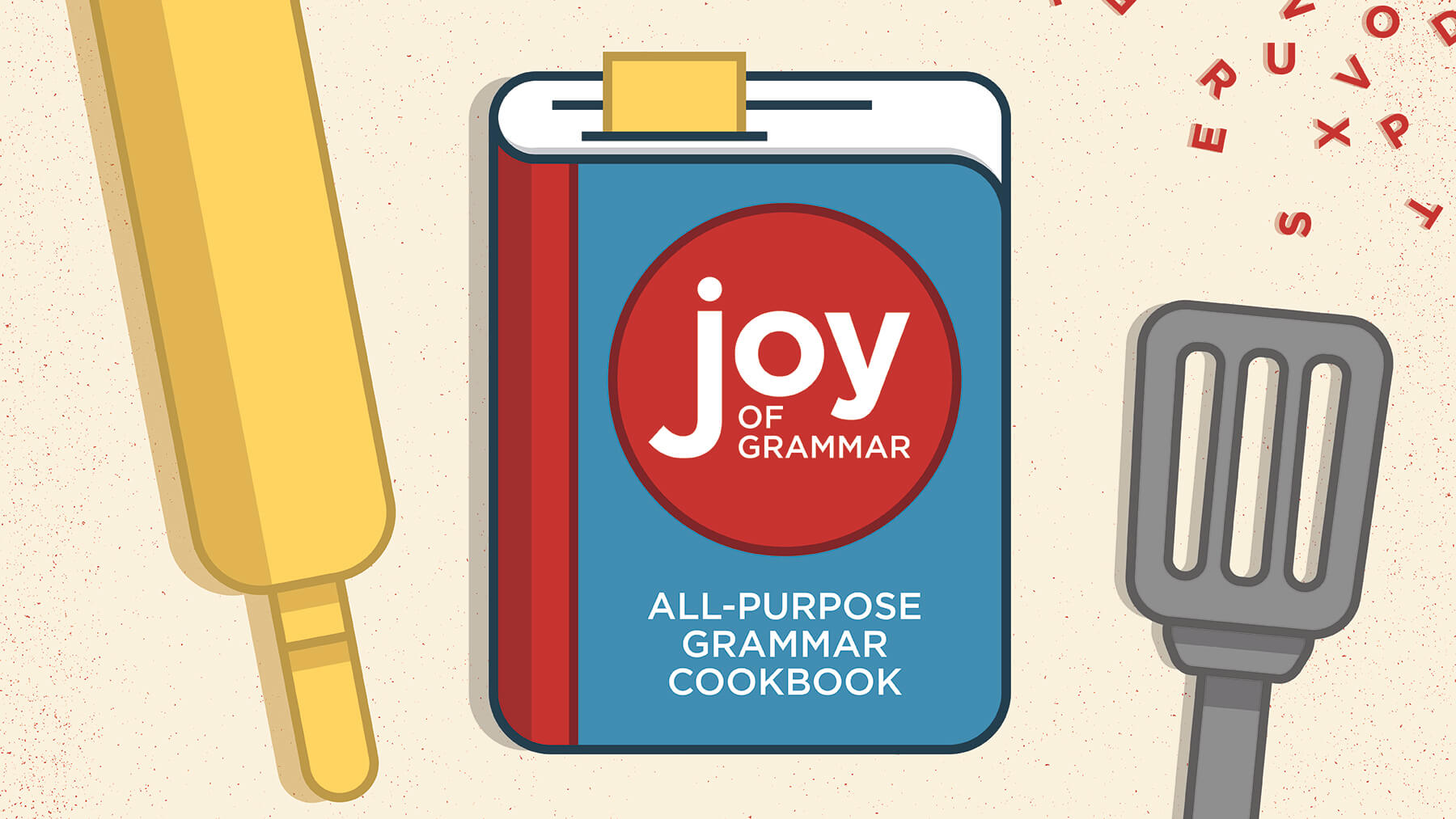
Contrary to what the reference books say, the most widely accepted definition of grammar is a set of stuffy, stodgy, smelly, party-pooper rules crafted by old fuddy-duddies to stifle expressive writing. Grammar chops up perfectly good prose with punctuation. It throws a hissy fit when subjects and verbs don’t agree. It is responsible for sentence diagrams. Ew.
Many writers perceive grammar as an adversary to their craft. But when fresh, raw ideas spring from the mind, grammar is what combines them coherently, making them intelligible — and palatable — to other people. It’s like cooking, really.
Grammar is a cookbook.
And the writer is a cook. The ingredients are parts of speech: subjects, verbs, modifiers and so on. Grammar tells you the proper way to mix those ingredients to create delicious copy.
There’s a potential for disaster when you decide to throw something together for dinner, adding more or less of this or that, mixing things in the wrong order, or employing substitutions willy-nilly. The same goes for the copywriter who approaches writing like the Swedish Chef from “The Muppets.”
Follow the recipe.
The first time I made pancakes, I used 3.5 teaspoons of baking soda because I thought that’s what the recipe called for when it said “baking powder.” Plus, I spooned it from the open box in my refrigerator. That’s right — the one that had sat there for months absorbing odors.
Those pancakes didn’t sit quite right. Neither does the following sentence.
- I gave a toy to the dog that was made of rubber.
Behold one of the most common errors in writing: the misplaced modifier. The way this sentence is constructed, the modifier (“that was made of rubber”) is describing the dog — not the toy.
A modifier is like baking soda. It’s a leavening agent. It expands the sentence by introducing new information. But it only works correctly when you pair it with the right ingredient (or word).
- I gave the dog a toy that was made of rubber.
Here’s a real-life flub from my own copywriting:
- Featuring luxury leather seats, today’s business professional can enjoy an aircraft cabin well-suited for long-range travel.
I mistakenly paired the modifier (“featuring luxury leather seats”) with the business professional, who now has a heinie upholstered in leather. Let’s fix that.
- Featuring luxury leather seats, this aircraft’s cabin is well-suited for long-range business travel.
If you follow the recipe for using modifiers, you’ll avoid anomalies like rubber poodles and leather-bound backsides. In other words, good grammar helps you write rationally.
Know your ingredients.
Craving skillet potatoes one evening, I found a recipe that included 1/8 teaspoon of ground cayenne pepper. I wasn’t familiar with this ingredient, but I thought it added a nice color. So I liberally coated the potato rounds as they fried in oil. The air in the kitchen started burning my nose and throat and making my eyes water. I spent a long time fanning the air with sofa pillows. The potatoes wound up in the trash. They were not safe for consumption.
You don’t have to be a great cook to detect an overpowering ingredient. When it comes to sniffing out issues in writing, however, it pays to have a brain stocked with good grammar. The grammatical mind will notice more than technical errors such as comma splices, misspellings and misplaced modifiers. For example:
Repetitive words.
- Come to North Pole Auto Service for 50 percent off our winterization service plus a complimentary oil change. We’ll perform lube, filter and tire service to get you ready for winter sleighing.
Repetitive sentence structures.
- At the Overlook Hotel, take in breathtaking scenery everywhere you turn. While the kids attend ski school, enjoy local brews in our Gold Ballroom. If you’re feeling adventurous, explore our two-acre hedge maze.
Repetitive ideas.
- Winter Wonderland has everything you need to deck the halls. Ornaments, menorahs, wreathes and trees — we’ve got it all. Our warehouse carries a limitless selection of holiday decor.
Learn the parts of speech, and your writing will look less like a bowl of stew and more like a deconstructed dish composed of beef, potatoes, carrots, onion, celery and spices. Then you can identify the ingredients that are making sentences go awry.
Cook up some tasty copy.
When you sit down to a delicious home-cooked meal, you’re enjoying a combination of flavors that someone thoughtfully prepared. It’s not a kitchen chemistry experiment. It’s the result of precisely measured ingredients and much practice putting them together.
Similarly, good copy is a careful arrangement of elements that makes clear, pleasing sense to the reader.
Essential to this task is a famous little recipe known as grammar.


